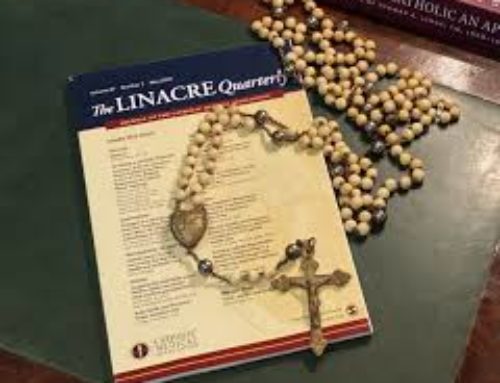Abortion Grief & Its attendant sense of Loss
Anne Lastman 2015 ©
(Published with permission)
Elective abortion is believed, and research appears to confirm this, to be more psychologically wounding than first thought. The case for serious psychological sequelae has mounted and today it is believed that these responses to elective abortion are significantly higher than first believed and more anxiety producing also than first thought.
It is understood that loss followed by the grieving associated with it can create a disequilibrium which challenges not only the individual’s assumptive worlds (Janoff-Bulman, 1992) but also creates a fissure in the inner being of the individual self. Integrating the loss will mean that the individual’s core constructs will have to be re negotiated and redesigned schemata incorporating the new experience will need to be constructed.. However, it must be accepted and understood that grief is unique to each and every individual, yet universal, and whilst this is so, the reality is that it will be different for each individual experiencing it.
When attachment in pregnancy is interrupted by foetal death, the grieving process appears not to take a straightforward course, but indeed it becomes what Rando (1991, 1993) calls “complicated mourning process.” Many reasons are posited for this and Speckhard & Rue (1992, 1993) and Doka (1989) also confirm this, citing attachment in early pregnancy is often still ambiguous (Speckhard, 1997) and still unrecognised. What appears to be thought about attachment is the attachment of individuals with one another especially where a strong bond has existed. Secondly where there has been a pregnancy termination (rather than spontaneous abortion or stillbirth) there is guilt especially in the manner of the termination (e.g. partial birth abortion). The psyche is unable to cope with the knowledge of “how” the death came about and in this way disassociates as a form of self-protection. This constant suppression prevents resolution. Further, because pregnancy loss is thought to now be culturally normative, those experiencing grief over a termination of pregnancy (irrespective of the reasons) do not generally have the social supports that are present, when the ending of a pregnancy is by natural means (miscarriage). This type of grief, (abortion) because it is unacknowledged, unsupported, then becomes “disenfranchised” (Doka, 1989). Hence with the absence of recognised support, including rituals of grieving, the work of mourning (Freud, 1917) can become obstructed. (Speckhard, 1985).
With “problem grieving,” as in the case of grieving following abortion for foetal abnormality, or coerced abortion, the grieving process can become so obfuscated that resolution seems impossible. Miller, (1992) posits that the cause of the complicated grief can be found in the psychological attitudes pre-existing in the woman at the time of the termination of pregnancy. These attitudes, ambivalence, deep sense of loss, stress were present during the decision making time and in the actual decision itself. However, there are those who would disagree (Speckhard, 1997) with this, and see the problem residing not in the decision-making but in the meaning that the pregnant woman has attached to her pregnancy. Speckhard (1997) states: “the meaning of any given experience can vary greatly not only from one individual to another, but significantly over the duration of a given individual’s life” (p 68) Speckhard perceives that there are several different meanings possible pre and post abortion. Pre abortion, no meaning given to pregnancy. Post abortion, meaning given is death of “foetal child” or” loss of pregnancy” and whilst both terms are understood as the same, the meaning is intrinsically and profoundly different.
When abortion trauma is seen as “pregnancy loss” the grief attached to it may be due to the loss of future, hopes, dreams and expectations that were part of this pregnancy. Therefore seeing abortion grief in this way the grief experienced could possibly be suggested as being regret over loss of what might have been, that is a possible future, and possibly also grief over the person I could and should have become but will not be.
In the perception of abortion trauma as “death of a foetal child” (Speckhard, 1997) the meaning of the abortion takes on a whole new perspective. In this view there is an experience of deep sense of loss. With this view there was a relationship; an attachment with the foetal child, and the loss of the foetal child has produced trauma and ensuing grief. DSM-IV states that “trauma is apparently more severe and longer lasting when the stressor is of human design” and Speckhard adds that it is this very aspect “human design” which complicates the grieving process. The abortion decision always has the “human design” aspect attached to it.
In a study by Boss, (1985) it was found that when a member of the family is physically absent yet psychologically present the dysfunction within that family structure was strongest. It was also found that ambiguity and congruence were resolved through the function of “grieving or closing out” the absent member. By doing this the dysfunction decreased significantly. Boundary ambiguity is the explanation for the ongoing relationship between those members present and those absent. The family member can either be an existing or pre existing member, or a member to be, but not yet. Pregnancy is a good example of boundary ambiguity because a new member of the family exists (in utero) but is not independently here yet.
Attachments are formed with the unseen member yet are potentially at risk due to the vagaries of existence. Boundary ambiguity, where the woman’s psychological attachment to the foetal child continues at the unconscious level, is more likely to occur and yet be less likely to be open for resolution. Further, Speckhard adds that when attachment to the fetal child has occurred and the accompanying role transitions begun, which are then abruptly ended (abortion, stillbirth, and miscarriage) then the stress experienced within the family unit can be excruciatingly stressful.” (p 79). Where abortion is concerned and specifically where the abortion is of a “wanted child” the inner conflict of the woman is more difficult to bring to resolution because “so much of the emotional impact of the event is disassociated due to its traumatic nature.” (p 79). The psychological presence of the foetal child (and resultant boundary ambiguity) “persists until a final and total acceptance of the death occurs” (p 79) This is the reason why abortion needs to be first seen as a death experience before mourning can begin and before progress towards resolution and healing can occur. Incomplete mourning results in impacted grief, which has the potential to be expressed in family structures well into the future. (Transgenerational grief).
Example of Disenfranchised and Complicated Case Study.
Diana and Alan both aged 28 years became traumatised and their grief complicated because of their need to have to make the decision to end the life of their foetal child.. The medical profession’s counselling towards early termination of pregnancies where abnormalities are found can be found to be insensitive. Counselling for this couple was towards terminating the pregnancy, and generally no counselling to keep the pregnancy going until the child was born (they were told that the baby would die in utero or just after birth) so that as parents they would have firstly not been called upon to have to make the decision and secondly they could have done all that was possible for their child in the duration left to them. Diana and Alan were unable to go past the decision and from that day on joint decisions were no longer a possibility and all activity was done in automaton mode. Each then retreated into their private world of grief.
Openness to communication appears to assist in adjustment. Communication allows for the sharing of information. Sharing of memories. Sharing and participation in this most sacred life event. Sharing of feelings with one another and allowing and supporting the grief of the other so that eventually the “work of mourning” (Freud, 1917) is completed. However, Raphael, (1984) says that this openness in communication is “difficult to achieve at the time of loss for each fears setting off the other’s grief” (p 55). For Diana and Alan the communication failed and each withdrew, fearful of showing the other how he/she was feeling.
For Diana and Alan difficulties in their work of mourning also arose because each member mourned in a different way from the other. Diana’s need was for comfort, consolation, words, nearness, talking, hugs (active work of grief), hence her eventual seeking of consolation outside the marriage; whilst Alan’s need was to withdraw into himself. He could not tolerate noise, the chatter, and the constant needing to be present to Diana. He had made the decision that was asked of him and did not want to speak about it again. He became buried in his grief and his work.
Both Diana and Alan became lost in their world of grief, and disorganization followed. Diana’s organized and orderly world became disorganized and in this chaos were revived memories of other losses and unfinished business. The depression, which then overtook her, was not surprising as it resurfaced multiple losses within her life. Losses, which had not been mourned. Losses, which included losses relating to love.
Freud (1917) offers a suggestion and a deep insight regarding mourning, and the suggestion is this, that attachments to loved ones carry within them an investment or a whole compliment of emotional energy. It is no wonder then that unmourned love is restless. It cannot be anything else.
The case of Diana and Alan clearly has dimensions of Anticipatory Grief, a type of grief, which begins in anticipation of a definite loss. Non-finite grief. A grief whose imprint remains lifelong. Complicated Grief. A type of grief, which is obstructed and incomplete. Disenfranchised grief. A grief which remains unacknowledged. Dysfunctional grief. A grief in which boundary ambiguities are strong. Chronic grief. A grief made more difficult because of depression, guilt, anger, blame. Multiple loss grief. Losses never exist alone. This grief is the grief of past-unacknowledged losses, which because of this last loss have been brought to the surface and now demand attention. Indeed the nature of the trauma experienced by the couple it is not surprising the various grief types manifested by the case in question.
THEIR INDIVIDUAL CULTURES AND WORLDVIEWS THAT HAVE BEEN CHALLENGED BY THE LOSS.
The word “culture” is unusual in this instance because the word itself “culture” appears not to fit. This word is like the word “love” “hate” everyone knows the word, has experienced the word but it is difficult to define exactly. However, what we do know about “cultures” is the fact all types of cultures have in common various elements and it is the elements which make the culture. Cultures have shared systems, words, and meanings. These are expressed through various symbols, rituals, stories, and myths. The function of all cultures is to hold together its adherents. Cultures may be similar but indeed are different in ways infinitesimal and this is so because cultures are ever evolving, ever changing and ever present to environmental influences. However cultures are human creations, which are created to fulfil the needs of those within that culture and provide its members with structure and stability the cultures of Diana and her husband Alan were seriously challenged by the circumstances of their daughter’s death. The first challenge occurred when they were unable to conceive easily. This was not expected when they married. Their expectation was that when they were ready they would immediately conceive. The loss of Leah (baby) challenged their “baby making” (their words) capabilities. Challenged their marriage. A sense of fault was found (each of the other) within the marriage but was not able to be spoken of or expressed. This barrier continued with the eventual withdrawal of affection by both of them and seeking affection and consolation elsewhere by Diana. Their assumptive worlds were challenged. Her femininity was challenged. His masculinity was challenged. The culture and beliefs which they both brought to their marriage and then merged to form a new culture specific to them and their union was also challenged. Relational cultures were also challenged. Their families continued to be supportive of both of them (at first) but when Diana looked outside of her marriage for comfort (because she felt her husband was distant) the familial support decreased, hence the social supports necessary at this time were suddenly absent. Friends also took sides and in this also support diminished.
FACTORS WHICH HAVE INFLUENCED THEIR REACTION TO THE LOSS AND THEIR LACK OF PROGRESS THROUGH MOURNING.
The decision to terminate the life of their daughter, for what they thought were good reasons (to save her from pain). The very decision itself holds within it many factors influencing their mourning process. Loss of all the planned future and dreams. Loss of “motherhood” and “fatherhood” Shock at the need to have to make such a decision. The need to organise her “resting place.” The need to tell family and friends who had been rejoicing with them and their pregnant condition. The need to give away and dismantle all baby items and dismantling of nursery. The inability to turn to each other for comfort. The withdrawal into private worlds of pain and the refusal to turn to one another for comfort. The eventual breakdown of their marriage and the loss of dreams, which they had made together. This couple were bereaved not only in the loss of their baby but all the subsequent losses, which ensued.
References:
Boss, P.G. (1985). Family stress: Perception and context. In M.B. Sussman & S. Steinmetz (Eds.) Handbook on marriage and the family (pp 695-723) New York: Plenum.
Bruce, E.J. & Schultz, C.L. (2001). Nonfinite Loss and Grief. A psychoeducational approach. London: Maclennan + Petty.
Dickenson, D. & Johnson, M. (eds.) (1993). Death, Dying & Bereavement. London: Sage Publications.
Doka, K.J. (1989). Disenfranchised grief. In K.J. Doka (ed.) Disenfranchised Grief:
Recognizing hidden sorrow. New York: Lexington Books.
Freud, S. (1917). Mourning and Melancholia. In Sigmund Freud: Collected papers. (Vol. 4) New York: Hogarth Press.
Janoff-Bulman, R. (1992). Shattered assumptions.: Towards a new psychology of trauma. New York: The Free Press.
Kubler Ross, E. (1969). On death and dying. New York: Macmillan.
Major, B. & Cozzarelli, C. (1992). Psychosocial predictors of adjustment to abortion. Journal of Social Issues, 48 (3), 121-142.
Miller, W. (1992). An empirical study of the psychological antecedents and consequences of induced abortion. Journal of Social Issues, 48 (3), 67-94.
Peppers, L.G. (1989). Grief and elective abortion: implications for the counsellor. In K.J. Doka (ed.) Disenfranchised Grief: Recognizing hidden sorrow (pp135-146).
New York: Lexington Books.
Rando,, T. (1984). Grief, Dying and Death. Champaign, Illinois: Research press.
Rando, T. (1986). Parental Loss of a child. Champaign, Illinois: Research Press.
Rando, T. (1991). Complicated bereavement. Paper presented at the Eastern Regional Conference on Abuse and Multiple Personality Disorder, Alexandria, VA.
Rando, T. (1993) Treatment of complicated mourning. Champaign, Illinois: Research Press.
Raphael, B. (1984). The anatomy of bereavement. A handbook for the caring professions. New York: Basic Books.
Rees, D. (1997). Death and bereavement. The psychological, religious and cultural interfaces. London: Whurr Publishers Ltd.
Rue, V. M. (1993). The psychosocial realties of induced abortion. In M.T. Mannion (ed.) Post-abortion aftermath: A comprehensive consideration.
Selby, T. (1990) The mourning after: help for post abortion syndrome. Grand Rapids: Baker Book House.
Speckhard, A. (1985). The psychosocial aspects of stress following abortion. Doctoral Dissertation, University of Minnesota.
Speckhard, A. (1997). Traumatic death in pregnancy: The significance of meaning and attachment. In C.R. Figley, B.E. Bride and N. Mazza (Eds.). Death and Trauma: The Traumatology of Grieving. (pp 64-100). Bristol PA: Taylor & Francis.
Speckhard, A.C. & Rue, V.M. (1992) Postabortion syndrome: An emerging public health concern. Journal of Social Issues, 48 (3). 95-119.
Speckhard, A. & Rue, V. (1993). Complicated mourning: Dynamics of impacted post abortion grief. Pre and Peri natal Psychology Journal, 5-32.
Worden, J.W. (1983). Grief counselling and grief therapy: A handbook for the mental health practitioner (2nd ed.). London: Routledge.








